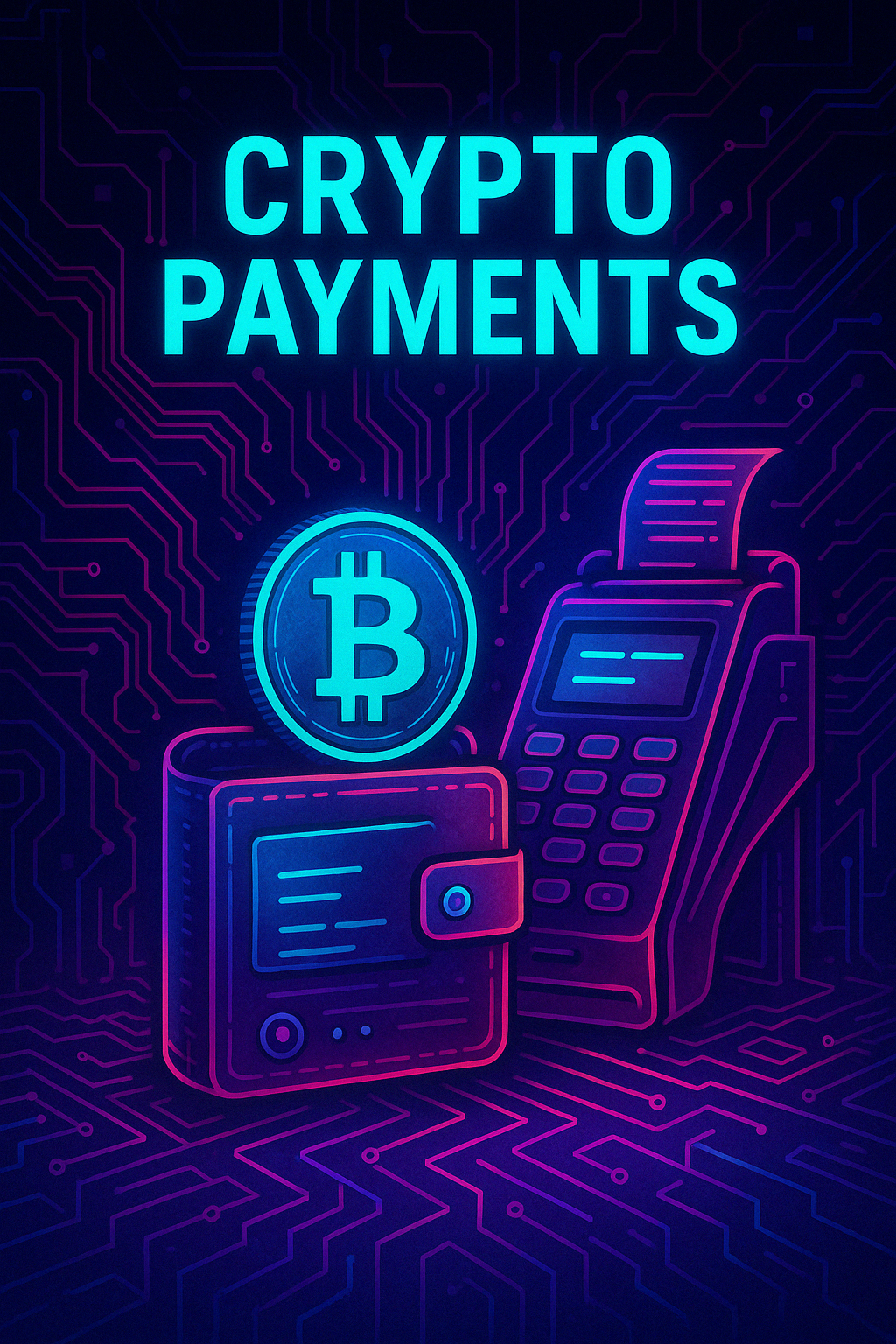Building the Next Generation of Crypto Payments: Stablecoins, APIs, and Decentralized Infrastructure
April 20, 2025 | by 16squaresmaster@gmail.com

Introduction
As the global economy shifts toward digital finance, cryptocurrency is no longer just an asset class — it’s an essential layer of modern payment infrastructure. Businesses, developers, and payment platforms are converging on a new frontier, where decentralized payments, stablecoin payments, and secure integrations are driving efficiency, speed, and transparency across industries.
In this guide, we explore the foundational tools of this ecosystem: multi-payment methods, crypto payment APIs, crypto merchant services, and the technologies enabling smooth payment reconciliation and secure crypto invoicing. Whether you’re a merchant, developer, or exchange, the insights below will help you align with the future of crypto payment gateway integration.
1. Stablecoin Payments: The Future of Digital Settlement
While cryptocurrencies like Bitcoin and Ethereum are volatile, stablecoin payments offer the best of both worlds: the speed and decentralization of blockchain with the stability of fiat currencies.
Why Stablecoins Matter:
-
Pegged to fiat currencies (USD, EUR) for predictable value
-
Ideal for secure crypto invoicing and settlements
-
Minimize price fluctuation risks for merchants and customers
-
Fast and cheap cross-border transactions
Popular stablecoins include USDC, USDT, DAI, and TUSD — many supported by all major crypto payment gateways.
2. Multi-Payment Methods: Flexibility as a Standard
In a digital-first economy, businesses must offer multi-payment methods to remain competitive. Customers now expect the freedom to pay in:
-
Fiat (cards, bank transfers)
-
Crypto (BTC, ETH, USDC, etc.)
-
Digital wallets (MetaMask, Phantom)
-
Mobile apps (Apple Pay, Google Pay)
Modern crypto merchant services integrate both fiat and blockchain options, making payments more inclusive and frictionless.
3. Decentralized Payments: Trustless and Transparent
At the heart of the crypto movement lies the concept of decentralized payments — peer-to-peer value transfer without banks or intermediaries.
Features:
-
Built on blockchain (Ethereum, Solana, BNB Chain, etc.)
-
Verifiable and auditable on-chain
-
Resistant to censorship or government interference
-
Ideal for Web3 apps, DAOs, and borderless commerce
Decentralized payments are increasingly used for payroll, freelance gigs, donations, and dApp monetization.
4. Payment Infrastructure for Web3 Commerce
A robust payment infrastructure is key to supporting real-time transactions and automation.
Elements of Web3 Payment Infrastructure:
-
Crypto payment APIs to connect wallets and dApps
-
Smart contracts for conditional transactions
-
Payment relayers and meta-transactions (no gas fees for users)
-
Real-time blockchain indexing (e.g., The Graph)
-
Integration with cryptocurrency exchanges for on/off-ramps
This architecture ensures scalability and flexibility across a growing decentralized economy.
5. Crypto Merchant Services: Beyond Just Checkout
Modern crypto merchant services go beyond just accepting crypto. They provide comprehensive financial tools that enable:
-
Fiat conversion and settlement
-
Analytics and reporting dashboards
-
Tax and invoice generation
-
Multi-currency support (stablecoins + tokens)
-
Risk and compliance modules
Examples: NOWPayments, CoinPayments, BitPay, Coinbase Commerce
Merchants in industries from e-commerce to SaaS are leveraging these services to streamline crypto commerce.
6. Secure Crypto Invoicing: Professional and Instant
Billing clients in crypto? You’ll need secure crypto invoicing.
Features of Top Crypto Invoicing Platforms:
-
QR code and address generation for each invoice
-
Support for stablecoin payments and tokens
-
Automated tracking and status notifications
-
Invoice expiry, discounts, and tax inclusion
-
Optional fiat conversion for payout
Invoicing platforms like Request Finance and Blockonomics offer secure and professional invoicing options for global businesses.
7. Crypto Payment Gateway Integration
A crypto payment gateway is the middleware that enables real-time crypto transactions on websites or apps.
Integration Methods:
-
Direct APIs for developers
-
Pre-built CMS plugins (Shopify, WooCommerce, Magento)
-
JavaScript widgets for checkout popups
-
White-label SDKs for mobile apps
-
Embedded wallet support via Web3 libraries (ethers.js, web3.js)
Popular gateways like NOWPayments or Crypto.com Pay offer easy onboarding and extensive cryptocurrency support.
8. Cryptocurrency Exchange and Liquidity
Every crypto payment system depends on a reliable cryptocurrency exchange layer for:
-
On-ramping fiat into crypto
-
Off-ramping crypto into fiat
-
Real-time market pricing
-
Providing crypto liquidity to ensure transactions complete instantly
Payment platforms often integrate with centralized exchanges like Binance or Kraken, or DEXs like Uniswap to access token pairs and liquidity pools.
9. Payment Reconciliation in Crypto
Traditional businesses are familiar with payment reconciliation — the process of matching payments received with invoices or internal records. In crypto, this process is simplified but must still be accurate.
How It Works:
-
Transactions are matched to invoices via wallet address or transaction hash
-
Smart contracts automatically mark transactions as complete
-
Dashboards display payment status in real time
-
Webhooks trigger events in accounting software
Accurate payment reconciliation is critical for compliance, accounting, and financial clarity.
10. Crypto Payment APIs: The Developer’s Edge
Crypto payment APIs allow businesses to implement powerful, programmable payments into their platforms with ease.
Capabilities:
-
Accept and verify crypto transactions
-
Create invoices and send notifications
-
Set triggers for payment reconciliation
-
Access user payment history and analytics
-
Convert currencies using real-time rates
Leading providers include:
-
NOWPayments API
-
BitPay API
-
OpenNode API
-
BTCPay Server API
These APIs are the backbone of any serious crypto-enabled platform.
Conclusion
The world is evolving toward programmable, decentralized, and inclusive payment systems. As traditional finance converges with Web3, businesses that embrace crypto merchant services, payment automation, and secure crypto invoicing will find themselves well-positioned to serve the next generation of customers.
Through stablecoins, smart APIs, and real-time gateway integrations, the crypto economy is no longer speculative — it’s foundational.
RELATED POSTS
View all


